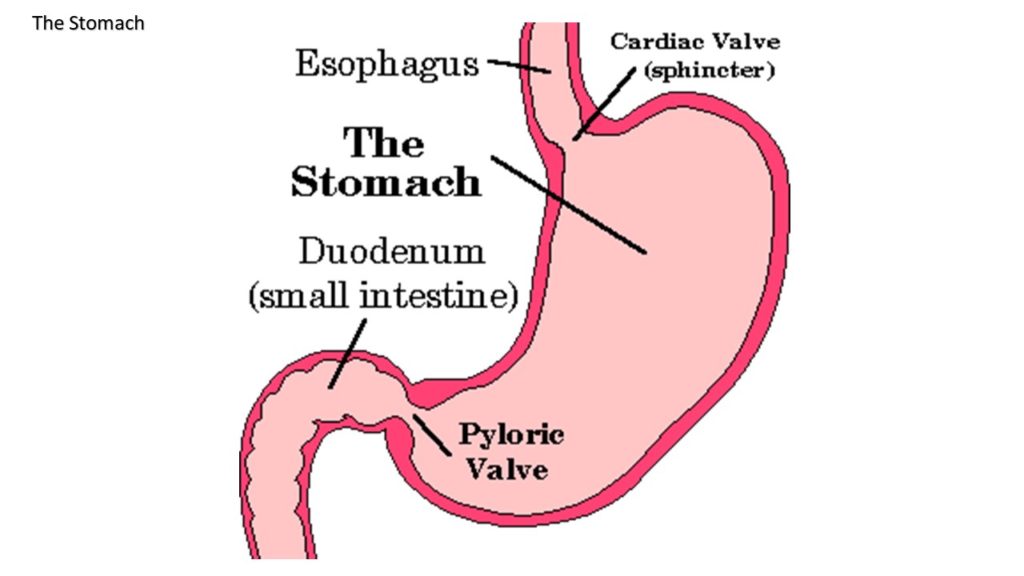True, many digestive disturbances of modern society could be avoided with the proper chewing of our food.
From the mouth, the food moves to the stomach by way of the esophagus, a muscular tube which passes through a hole in the diaphragm to enter the abdominal area. The muscles in the esophagus squeeze the food downward with a wavelike motion, a process referred to as peristalsis. Because of this muscular action, food can be swallowed in zero gravity, or even when the body is upside down.
Whereas the pH (acidity) in the mouth and esophagus is very basic (high pH), the pH in the stomach is very acidic (low pH). This low or acid pH is the result of the secretion of hydrochloric acid (HCL), and is necessary for the action of the enzymes in the stomach that are responsible for breaking down protein. The stomach is protected from this acid by a mucus lining. The stomach acid is kept out of the esophagus by the action of the cardiac valve, a sphincter muscle which opens when food passes through, but which immediately closes to prevent the contents of the stomach from backing up into the esophagus.
 Another sphincter valve, the pyloric sphincter, keeps the food in the stomach until it has been properly churned and mixed. Once the enzymes that require an acid environment have had time to do their job, the pyloric sphincter opens and the food passes into the small intestines where most of the absorption of nutrients takes place.
Another sphincter valve, the pyloric sphincter, keeps the food in the stomach until it has been properly churned and mixed. Once the enzymes that require an acid environment have had time to do their job, the pyloric sphincter opens and the food passes into the small intestines where most of the absorption of nutrients takes place.
True of False:
The digestion of proteins, which occurs primarily in the stomach, requires a very acid environment, provided in the stomach by HCL (hydrochloric acid.)
True
False
(Select the best answer and click on the “Continue” button.)
